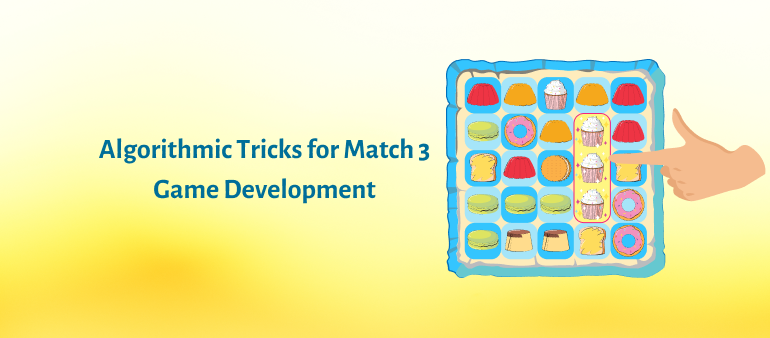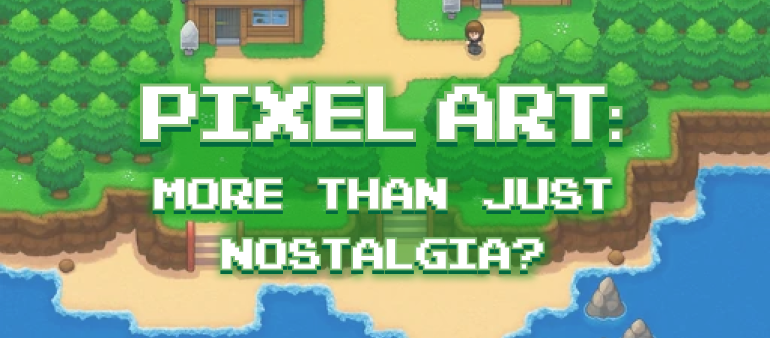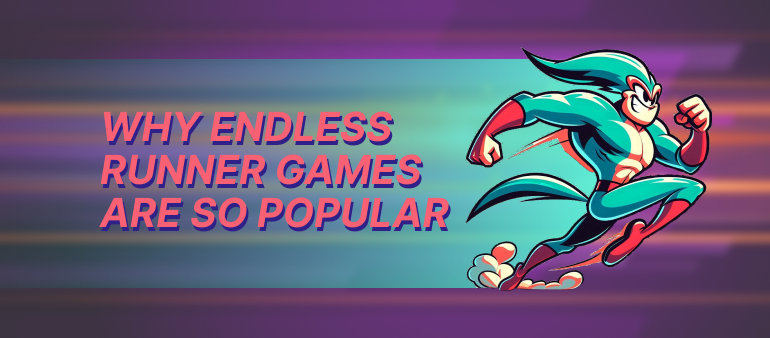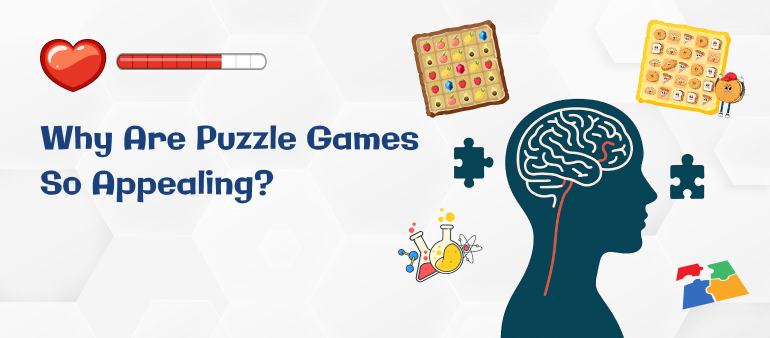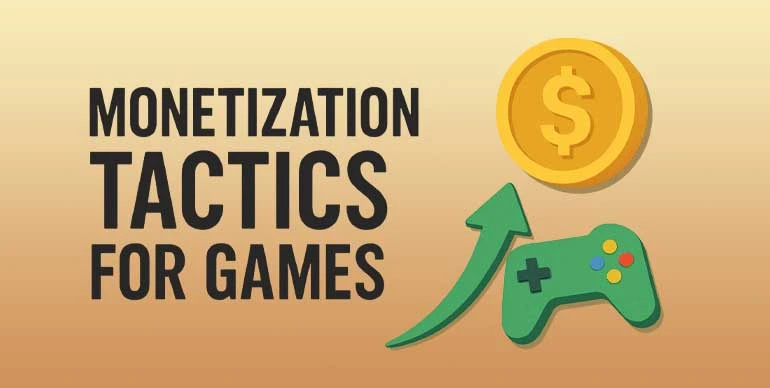Building a Match 3 game that feels good isn’t just about flashy visuals. Underneath all those colourful tiles is a stack of code that needs to pull serious weight - fast match checking, smooth tile drops, and a difficulty curve that keeps people playing “just one more level”.
Sounds simple? It’s not.
Match 3 development is full of little gotchas which game app developers have to keep a hawk-eye out for. One dodgy match check or a weird tile spawn and suddenly, players are quitting your game halfway through level 6. That’s why it’s worth getting the foundations right - and that means your algorithms.
Here’s what you’ll want to focus on if you’re serious about building a Match 3 game that keeps players coming back.
1. Matching Logic: Where It All Starts
At the heart of every Match 3 game is one simple rule: match three (or more) of the same tile in a row or column. But getting that to work properly? That’s where things get interesting.
Swap Detection
Whenever a player swaps two tiles, your game needs to instantly check: did that move actually create a match? You’re not just looking at the swapped tiles - you’ve got to scan the grid and catch every valid match that’s now appeared.
Match Verification
And it doesn’t stop at the first match. Clearing tiles might shift others into place, creating more matches. Your code needs to sweep the board again and again until the dust settles - ideally, fast enough that the player never feels the lag.
Cascading Combos
This is where the magic happens. One move creates a match, which triggers another, and another... You want those moments where everything just explodes in a glorious chain reaction. But your logic has to handle it in the right order - and not miss a beat.
Special Tile Recognition
Bigger matches often create special tiles - striped ones, wrapped ones, bombs. Your algorithm needs to spot specific shapes (like T or L) and assign the right power-up. It’s what makes the game feel strategic, not random.
Looking for a brain workout, or simply an entertaining game? We make them fast and cost-effective.
2. Tile Spawning: Filling the Gaps Right
Once tiles disappear, new ones need to drop in. Seems straightforward - but this bit has a bigger impact on gameplay than you might think.
Random, But Not Too Random
Pure randomness sounds fun until it breaks your game. Too much, and you get unsolvable boards. Too little, and it’s just… boring. Your spawning system should strike a balance - enough unpredictability to stay interesting, but not so wild that it ruins the game flow.
No Dead Ends
Your code should check for impossible states - boards where no matches are possible. And when that happens, reshuffle or regenerate. Nobody likes getting stuck with zero options.
Setting Up Opportunities
A clever spawn algorithm can drop in tiles that set players up for satisfying combos. Not hand-holding, but giving them a nudge in the right direction. Those small wins build momentum.
Cascading Matters
Visually, how tiles appear matters too. Do they just pop in, or fall from above? Cascading animations feel better - and they add to the sense of motion and cause-effect that Match 3 thrives on.
3. Level Generation: Keeping It Fresh
Most Match 3 games live or die by their level design. You’ll probably have hundreds of levels, so you need a smart system that can keep the game feeling fresh without reinventing the wheel every time.
Mix Up Layouts and Obstacles
Different grid shapes, blockers, cages, and other roadblocks add challenge. Your level generator should handle all that - and not just copy/paste variations of the same thing.
Smooth Difficulty Curve
Don’t punch players in the face with difficulty on level 4. Ramp things up gradually, introduce new mechanics bit by bit, and be smart about move limits. It should feel challenging, not punishing.
Clear Objectives
Each level needs a goal - core X points, collect Y items, clear Z tiles. Whatever it is, make sure your system generates levels that actually make the goal achievable. Nobody wants a level that’s technically winnable but practically impossible.
Luck vs Skill
There’s always a bit of chance in Match 3, but the best levels reward planning and foresight. If too much hinges on getting lucky drops, players will get frustrated and walk.
Logic Simplified works with planning and foresight to make Match 3 games that sell. Know how!
4. RNG: The Art of Controlled Chaos
Randomness is baked into Match 3 games. That’s fine - it’s part of the fun. But you’ve got to keep it in check.
Fairness First
Players can sense when the game’s working against them. Don’t let your RNG favour the system too often. It should feel unpredictable, not unfair.
Tune the Odds
You don’t want rare tiles showing up too frequently, especially early in the game. Adjust probabilities based on context - level type, current board state, power-up triggers.
Avoid Brutal Streaks
A long run of bad luck is worse than a hard level. Good RNG systems include soft protections - ways to stop players from getting stuck in a cycle of failure because the tiles just won’t cooperate.
5. Visuals & Audio: Making It Satisfying
Let’s be real - nobody sticks around for long if your game feels bad. That’s where visuals and sound come in. These aren’t just polish - they’re part of the gameplay loop.
Animations That Flow
Tile swaps, explosions, tile drops - they should all feel smooth and responsive. That’s handled by animation algorithms, and they need to keep up with whatever’s happening on-screen.
Effects That Pop
Big combos need big effects. Particles, flashes, screen shakes - the kind of stuff that makes you go “yes!”. Your algorithms decide when and how those fire off.
Sounds That Sync
Sound effects should line up with player actions. A satisfying pop, a powerful boom - these small things add up. It’s not just feedback - it’s reinforcement.
Final Thoughts
Match 3 games live and die by their systems. You can have the best art in the world, but if your matching logic is slow, your spawns are random chaos, or your levels feel unfair, players won’t stick around.
Get the core algorithms right, though, and you’ve got something special - a game that’s smooth, satisfying, and just hard enough to keep people coming back.
And if you’ve ever played a Match 3 game where everything just clicked? Chances are, this is what was working behind the scenes.
Want to Build a Match 3? Here's Who You Call
Logic Simplified is a Unity game development company powered by some of the sharpest minds in the industry - think value-driven AI, brilliant game concept artists, innovative 2D/3D designers, and UI/UX designers who actually understand how players think.
Whether you're building the next viral Match-3 or an open-world logic labyrinth with lava bees (we get it), we’re here to help make it real. Apart from top puzzle game development services, clients value us for our expertise in card game apps, board game apps and other game genres.
Reach out to us at enquiry@logicsimplified.com - and let’s create games that players love, cry over, and always come back to.
 Get a Quote
Get a Quote

